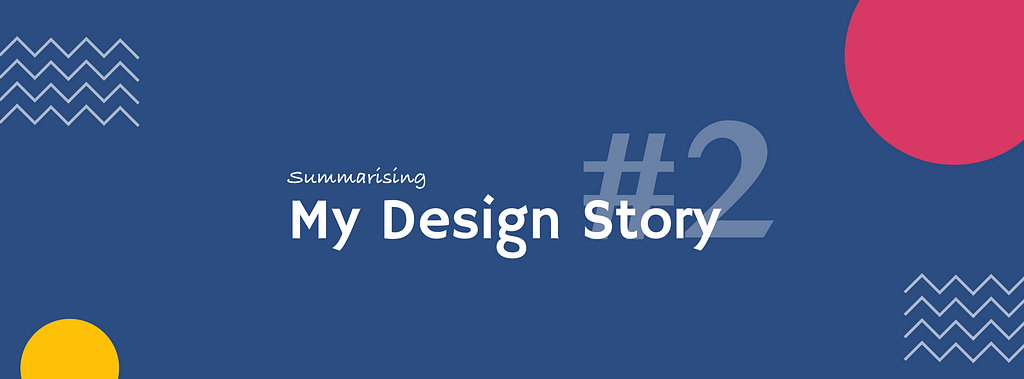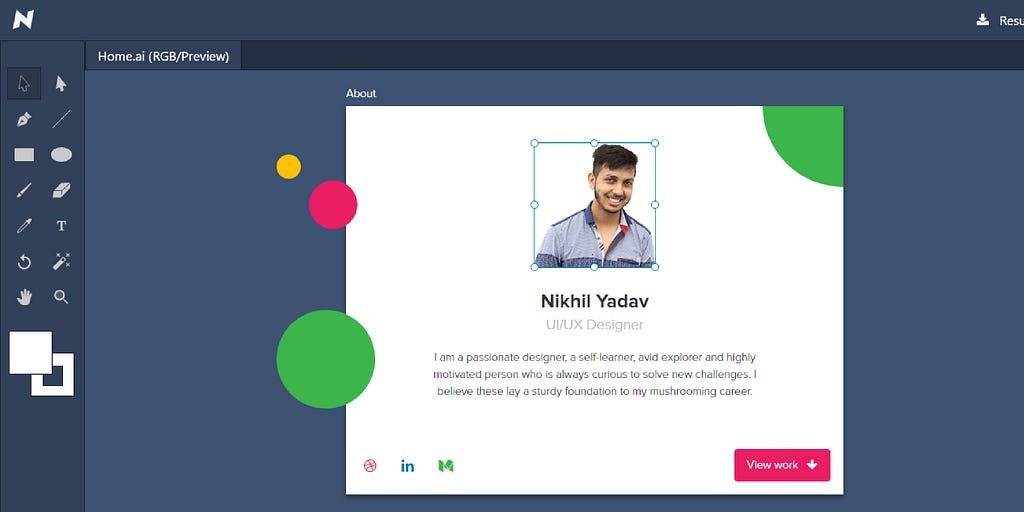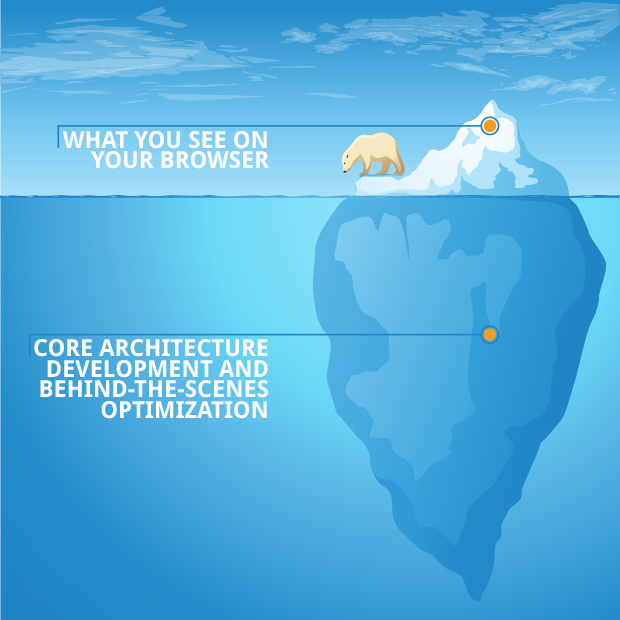Latest news about Bitcoin and all cryptocurrencies. Your daily crypto news habit.

Last year, at the same time, I posted “Summarizing my 2 yr Design story” where I shared my story of 2 years in design and How I started my career. I wanted to publish its part 2 but I couldn’t wait for another 2 years as there’s a hell lot to tell about the past year. Also, it’s a great way to introspect what all I have learned in the last year. I ended the last article with a firm resolution to work on my skills and step into the world of freelancing. Let’s see how it all went so far. I hope you’ll enjoy reading this blog.
2017 was another roller coaster ride for me. It was the third year of my graduation. With nearly no real project(except one website) in my hand by the end of 2 years of the design learning, I wanted to dedicate this year to working more on real projects i.e. gaining product experience and building my portfolio. For this, I stepped into the world of freelancing, worked on establishing my brand and learned how to market myself.
Freelancing and Building Portfolio
Both of these are interconnected. Building portfolio will attract freelance projects and doing freelance projects will build your portfolio. Then which one to start first? I also struggled with the same question. At this time, I had some of my concept projects on Dribbble. I selected 2–3 of my best projects and started writing about their design process, added them to my portfolio and launched it.
 My portfolio: http://nikhilyadav.com
My portfolio: http://nikhilyadav.com
Portfolios are a great way to have all your curated content at a single place. You can’t expect your client to go through all of the links of the multiple samples that you had sent. I recommend everyone to start building their portfolio website if they haven’t already.
“Portfolios are a great way to have all your curated content at a single place.”
After launching my portfolio, I started receiving freelance projects. I also increased my activity and posts on Dribbble and Medium. And Yes, to flaunt a little, I got my Macbook pro with the freelance money. Macbook is a great addition to my set of design tools with which I am able to use Sketch and principle, another powerful tools for designing.
Foray to Frontend Development
Neither I wanted to depend on any developer to do the development of my portfolio nor I wanted to use commercially available templates for the website, I wanted a unique portfolio website for myself and in order to develop it on my own, I had to learn to code. There is nearly no article where I haven’t stressed on the importance of understanding the development language by a designer. I spent almost 6 months practicing frontend by improving my portfolio website and exploring more about it on the internet. The field of frontend development is huge. During my internship with Indiez, I got to know that there is a backend associated with the frontend too(surely not my cup of tea). For the time being, I will try to stick with Product Designing. In the end, I had shared some of the resources that helped me gain frontend knowledge.
Diving deep into design
 https://www.worketc.com/wp-content/uploads/2014/12/development-iceberg.png
https://www.worketc.com/wp-content/uploads/2014/12/development-iceberg.png
When you start realising that you had enough of design skills and start calling yourself UI/UX Designer or a Product Designer then give yourself a pause, you haven’t really touched the ground. I was also like the same guy I’m referring. It was only after reading multiple case studies on Medium, I realised that 80% of the total design effort is UX Designing and 20% is building UI mockups which I have done until this time. “Understanding Your Users” by Catherine Courage and Kathy Baxter came very handy for this. It is a detailed guide for anyone who is a beginner in the field of UX. After reading this, I started heavily focussing on conducting user interviews and surveys before I start designing. I also created its awareness among my juniors and I can now see many of them conducting the user interviews and surveys. I also did user testing on my website. You can read about it here.
“80% of the total design effort is UX Designing and 20% is building UI mockups.”
Reading and writing
One more way that this year was beneficial for me was that it marked an increase in a number of articles I post over on medium. Earlier I was too lazy to share my design process and write a blog about it. One of the major reason was that my grammar sucks(as you can see in this blog 😛). Well, after writing multiple blogs, my grammar has improved. Now I enjoy writing blogs more than ever. It’s also very important for the designers to share their design process. Here’s a very good article by Simon Pan that talks about the importance of storytelling in the portfolios.
As lazy as I was in writing so I was in reading books. I started reading some books and blogs online about design. Not only it improved my knowledge of design and its various facets but also improved my writing skills. I had shared my reading list at the end.
“Reading and writing will improve your writing skills.”
Internship season’s back
Once I had my portfolio and resume in check, I started applying for winter and summer internships. In 2017’s winter, I got the chance to work with Indiez. It was a wonderful experience. You can read about it here and the project here. In this internship, I got to work on frontend development along with the design. I learned React JS and this was my first professional exposure in Frontend Development. Having done two internships now without any proper design mentorship, I now wanted to get a hook of working in a big design team for my next internship. And here the things became complicated.
Most of the companies who have a good design team hire an intern for a minimum duration of 6 months but I was available for a maximum of 3 months. And it’s even difficult to get any foreign internship(particularly in the US) because of multiple factors. One of the major factor is that there is a large pool of potential candidates residing in their own country. So, it’s much easier for them to get a candidate there and this eliminates the need to invest in any outside candidates as visa application processes are tedious. You can also try to get your visa by yourself but again it depends on you and your financial status. Now, the only companies left to target were Indian Companies.
Tip: You can try getting an internship in European countries. Their visa application process is much simpler than american countries.Rejections again“It seemed difficult to kill the boss when you had a small gun in level 1 but as you level up and get a bigger gun, Game doesn’t get easier but it becomes more difficult to kill the bigger boss in the next level.”
I remember this dialogue from “TVF Humorously Yours” that says that with every success you gotta work harder as difficulties would follow. You would think that life will get easier but this might not be the case every time. Rejections will always accompany us no matter how successful you’re. Success is a subjective term and it varies from individual to individual. You’ll make mistakes, work on them and this is how you improve. If you’re leading a life without any failures then It’s a red flag. It’s true that accepting rejections is not an easy task. I too ranted, got frustrated and even thought of giving up applying which was an easier solution. But believe me, none of this worked unless I accepted the rejections and start working harder. Analyse where you went wrong, ask for feedback and try to work on that. Some companies will give you feedback and some won’t.
“If you don’t fail, you’re not trying hard enough.- Von Glitschka”
There are many reasons why a candidate will get rejected even though the interview was a positive experience. Rejections don’t always mean that you’re under-skilled but you probably weren’t culturally fit for the company. Maybe you have strengths in some areas but not in others that are important to the company. For example, The company wanted the mobile experience but you had work majorly for the desktop. This will teach you that you need to start applying for companies that have desktop-based products. Or Maybe your preferred work style doesn’t match with that of the team. Or One of the core soft skills that the company was looking was absent. This doesn’t mean you should portray entirely different personality in front of interviewers for the sake of getting selected in the company. Be honest with yourself and the interviewer, show who you actually are and don’t try to pretend to be someone else otherwise you’ll end up getting a job that you’ll not enjoy longer.
It’s important to not take these rejections personally. It usually means that you are not the best fit for the role at that moment. It doesn’t mean you’re an unpleasant person. The positive thing I found from all of the rejections were that I got to interact with talented people and these rejections helped me understand my profile better.
All of these thoughts were shared by some of the most talented people in Silicon Valley. I had tried to compile them. You can also join the group here.
Freelancing and Internships
Another thing that rejections taught me was the difference between applying for an internship and freelancing.
As I started taking more freelance projects, I began selling myself more each time I had a conversation with the client. This became the part of my behavior while talking to people and thus started to affect my conversations during the internship process.
For internships, companies prefer candidates who are willing to learn than those who already know everything and are reluctant to improve by taking feedback from the senior members. When you’re applying for freelancing, companies tend to prefer candidates with more technical skills. There you ought to sell yourself. Here I would like to thanks Agniva Si for helping me out.
And the journey continues
As the final year is approaching nearer, I have started finalising on my long term goals. For this I have started reflecting on things that interest me most and working towards this direction. First I thought it’s Designing and Now, I have found out that I love sharing my knowledge of design more than I enjoy designing. Being a self-learner, I have faced many difficulties in Design. Moreover, I believe that Design is a mutual learning process. One learn by sharing his design knowledge with others. This community has given me a lot in terms of knowledge and exposure. Therefore I would like to keep sharing my knowledge with these blogs and I plan to start vlogs soon.
That’s all folks
Still here? Thanks for reading this so far. I would end my blog on a note that 2017 was an adventurous roller coaster ride for me. I had learned a lot in this year starting from freelancing, getting the taste of frontend development to finally understanding what rejections mean. I will keep sharing this knowledge with you and keep working harder to improve myself.
Check out my previous article to know how I started my career in Design.
Resources
Books
- Steal like an Artist-Austin Kleon: This books talks about how you can take inspiration from other’s work and at the same time saving yourself from plagiarism.
- Show your work- Austin Kleon: This books talks about the situation when you have lost your job but You’re not at all worried because people are still eager to hire you as they know how good you’re at your work. In short, it talks about why it’s important for a creative to market his work.
- Lean Startup-Eric Ries: This book talks about how you can start your company with minimum utilisation of resources and efforts, create a minimum viable product, and then test it with real users.
Frontend Development
- Introduction to Web Components: https://css-tricks.com/modular-future-web-components/
- Learn Flexbox: https://medium.freecodecamp.org/the-ultimate-guide-to-flexbox-learning-through-examples-8c90248d4676
- Great tutorials to learn React JS: https://tylermcginnis.com/
- Organise your React Components at one place and use them across projects: https://storybook.js.org/
My recent articles
- What I learned from my Google UX Interview Internship Process
- How we used user centered and component driven approach to build MVP at Indiez
- Making of my portfolio website
You can follow me on Dribbble, Uplabs and Twitter. I keep posting regularly over there. You can also mail me on yadavnikhil012@gmail.com if you have any questions or just want to say hello.
Summarising my Design Story #2 was originally published in Hacker Noon on Medium, where people are continuing the conversation by highlighting and responding to this story.
Disclaimer
The views and opinions expressed in this article are solely those of the authors and do not reflect the views of Bitcoin Insider. Every investment and trading move involves risk - this is especially true for cryptocurrencies given their volatility. We strongly advise our readers to conduct their own research when making a decision.